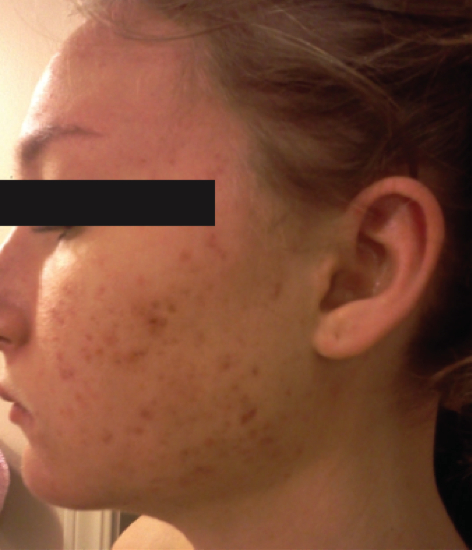For many patients, acne on the face, chest, and back can lead to permanent changes – the formation of post-acne scars. Blockage of follicular units by bacteria, sebum and dead skin cells leads to the development of inflammation with subsequent rupture of the follicle. The body, of course, tries to restore damaged elements, but the healing process does not always go smoothly – scars form on the affected areas. Dermatologist Sandra Marchese Johnson in the article estet-portal.com presents a clinical case of treatment of atrophic post-acne scars using a combined approach – scar subcision and sublative therapy in one procedure.
- Acne scars: causes of formation, risk group, methods of therapy
- Description of a clinical case: treatment of atrophic post-acne scars
- Benefits of combined scar therapy: subcision + sublative treatment
Post-acne scars: causes of formation, risk group, methods of therapy
Several factors influence the formation of post-acne scars. At risk are patients who do not start treatment of inflammatory acne in a timely manner. Genetic factors that increase inflammation in the skin also increase the likelihood of acne scarring.
Atrophic scars are most often formed on the face due to insufficient collagen production during the healing process. Hypertrophic scarring is more common on the back and chest due to excess collagen production.
Follow us on Instagram!
There are various methods of post-acne therapy. For treatment of atrophic scars, which will be discussed in the presented article, use:
- topical retinoids;
- filler injections;
- ablative and non-ablative laser procedures;
- TCA peels;
- radiofrequency therapy;
- vascular lasers;
- dermabrasion;
- surgical methods (punch-elevation, punch-eexcision and subcision).
Clinical case description: treatment of atrophic post-acne scars
A juvenile patient came to the author with complaints of acne and post-acne, which persisted for 7 years. Previously, the patient received therapy:
- oral drugs;
- by topical means;
- chemical peels.
Good results were obtained after 3 sessions of scar subcision and sublative therapy.
You may also be interested in: Post Acne Combination Therapy Protocol: A Case Study
After an initial consultation, which determined that the patient was an ideal candidate for combination therapy, and obtained informed consent, the author performed scar subcision. Then, immediately after subcision, the target area was treated with sublative radio frequencies.
Sequence of scar subcision:
- The skin is thoroughly cleansed.
- Tumecent anesthesia (lidocaine) is performed.
- The needle is inserted parallel to the skin surface into the fibrous tissue of the scar, which is often located in the deep dermis.
- The needle is moved under the skin, breaking the integrity of the fibrous fibers that connect the scar tissue and the healthy subcutaneous layer.
- Fan-shaped movements of the needle are performed to more effectively release the fixed tissue and reduce the depth of the scar.
- For more effective elimination of individual scars, various puncture sites are created.


Patient at the initial visit (left) and after the course of procedures (right)
Photos before and after treatment are shown above.
After the procedure, the following may persist for several days:
- small bruising;
- swelling;
- a feeling of discomfort.
The author advises patients not to use topical products or expose their face to water or cold compresses on the day of treatment.
Post-procedure recommendations:
- use cold compresses;
- avoid sun exposure;
- if necessary, apply
medical Vaseline to the skin. Benefits of combined scar therapy: subcision + sublative treatment
– a minor surgical operation that helps reduce the appearance of wrinkles, cellulite and post-acne. The procedure is often performed under local anesthesia with a hypodermic needle. Some specialists prefer to use a Nokor needle for subcision.
Radiofrequency– another procedure that provides good post-acne treatment results. In the process of sublative resurfacing, radio waves passing through the electrodes heat the dermis of the target area without affecting the epidermis. In conditions of high temperatures, collagen production is enhanced, the skin is tightened. The combined use of subcision and ablative therapy for post-acne scars improves treatment outcomes.
Patients tolerate sublative resurfacing well. This technology provides an excellent effect in the treatment of moderate to severe post-acne in patients with any type of skin.
Fractional exposure leads to the formation of damaged microzones, surrounded by areas of healthy tissue, which supplies the cells necessary for the rapid healing of the skin.
Read also:Topical Anke Therapy: Possibilities and Results of Application in Practice
Side effects of sublative therapy:moderate discomfort;
- temporary erythema of the treated area.
- The recovery period after the procedure is minimal or non-existent, and the result increases as the collagen remodels. Sublative therapy is safe for
. For best results, it is recommended to carry out the procedure once a month for 3 months. Subcision and sublative therapy alone markedly improve the skin condition of post-acne patients. Their combined use allows
remodeling of the dermis, making it more sensitive to radiofrequency stimulation of neocollagenesis, which means a more pronounced effect in the treatment of atrophic post-acne scars.
Based on Practical Dermatology.More interesting videos on our






